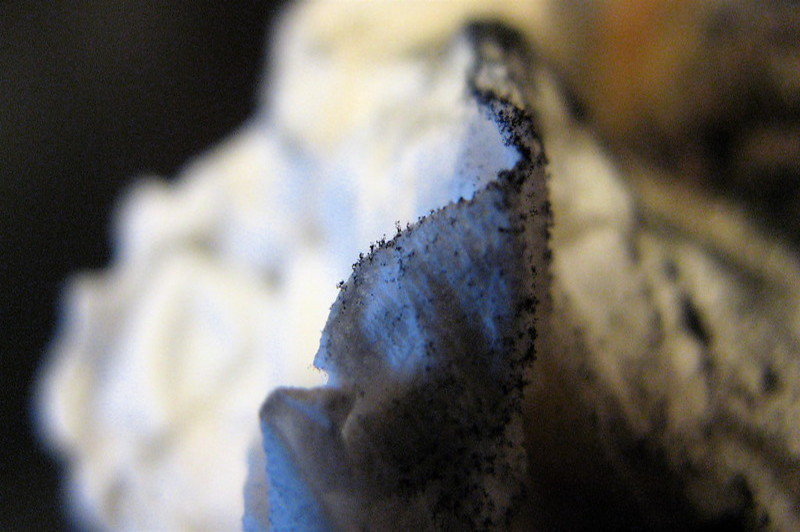Knowing what does toxic black mold look like allows you to identify them quickly and helps you prevent them from being an actual problem! In the wake of a disaster, such as a storm or a flood, molds can grow in your home. What’s more alarming is that mold could turn out toxic, posing a severe health hazard to you and your family.

What Is Toxic Black Mold?
The first thing you probably need to know is that not all black molds are toxic. Just because the mold in your home is black does not mean it is toxic. Not all black molds are life-threatening.
Mold has a range of colors that depends on what materials it is growing on. Still, keep in mind that black mold, while not toxic, could still be an allergen. It is why toxic or not, removing and preventing mold is always the advisable and safer option for all occupants.
Black Toxic Mold, otherwise known as Stachybotrys Chartarum, is a highly toxic kind of mold. It releases mycotoxins, a toxic chemical active in its mold spores, and releases them in the air. Once inhaled, it poses a severe danger to human health.
Its most common cause is improper ventilation. Another possibility is leaks or flooding, which have been stagnant for an extended period. Its food source should be low in nitrogen and high in cellulose for it to multiply.
How Does Toxic Black Mold Look Like?
An important question you might ponder on is definitely about its appearance and its favorite spot to grow on. Toxic Black Mold is a black or extremely dark grey stain that covers a specific area that has been damaged by water. It typically is a black stain that covers a high-moisture area.
It has circular patterns with round colonies and a speckled appearance, though it could also have irregular patterns. You might also notice darker layers that go over lighter layers of mold. These spots range from less than an inch to several inches across.
Spreading in the form of concentric circle patterns is also a possibility. Most mold spots appear shiny or slimy due to the moisture. However, if the leaks are repaired, the mold could look drier and sometimes even powdery.
Sometimes, it could have a slight greenish tinge. It is usually not textured, giving it somewhat a resemblance to stain. Do note that mold does not stain — if you clean an area with mold and there are still leftover dark spots, it means there is still toxigenic mold left on the surface.
Water damage is probably the leading cause of mold. It makes bathrooms a favorite spot for toxic black molds, as it has frequent encounters with water from tubs, showers, and toilets. Knowing how to remove mold caused by water damage is valuable knowledge most homeowners try to have.
It could also affect areas with high temperatures, damp conditions, and poor ventilation; kitchens, wet basements, and laundry rooms can serve as possible breeding grounds for toxic molds.
Does It Affect Your Health?
Black toxic mold can cause health issues. It releases mycotoxins, which are notorious for causing burning sensations in the lungs and throat, fever, migraines, rashes, persistent coughs, and chest pain. Long exposure to toxic mold can lead to fatigue, breathing problems, sinusitis, and other pain in the cavities of the sinus.
Non-toxic black molds are less dangerous, though they could still pose health problems. They could cause allergic reactions, especially in sensitive individuals and those with asthma. Symptoms tied to allergy are vomiting, nausea, and bleeding in the nose and lungs.
It is also said that black toxic mold could attack a person’s neurological and mental state. The mycotoxins it releases can kill neurons, destroy cognitive abilities, and cause nervous system disorders such as tremors or personality changes.
How To Remove It Yourself
Mold can root itself on various furniture or objects in your home. Regardless of whether you see the mold on your mattress, ceiling, or wall, the one burning question remains—how can you remove it?
The easy answer is to call in a professional to have it safely and expertly removed. You can also ask an expert to inspect your house if you have an inkling suspicion of it co-existing with you.
If you want to save money and do it yourself, here is a simple guide you can follow:
Step #1. Locate the source and cause of the mold.
Step #2. Create a mold-fighting solution in a spray bottle. Grapefruit and Tea tree oil are amongst the most effective disinfecting agents around that are non-toxic. You may also use a bleach solution.
Step #3. Put on protective gear like safety goggles, a face mask, and gloves.
Step #4. Apply the cleaning solution.
Step #5. Scrub the mold area. Make sure that there are no spots or stains left.
Conclusion
Having a working knowledge about typical home problems, like mold, could serve as a powerful weapon in a homeowner’s arsenal. Having the answer to what does toxic black mold look like and how to remove it can empower you to resolve a potential health hazard.
No mold should be welcome in your home, be it black mold or the toxic kind. It should all receive the same treatment—by removing and preventing it.
